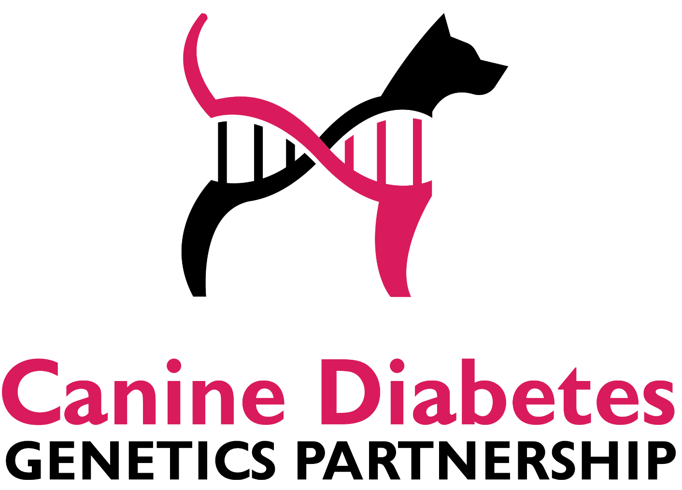
Contact information

Websites
-
CDGP
Canine Diabetes Genetics Partnership

Marsha Wallace
Clinical Research Fellow in Bioinformatics
I am interested in understanding the genetic basis of complex diseases and study a range of conditions across many species. I have a special focus on using genomic and transcriptomic techniques to understand how genetic variation, genes, and pathways contribute to disease risk, onset, and severity. I am involved in several collaborative projects, including the Mapping Animal Susceptibility to Coronaviruses: Outcomes and Transcriptomics (MASCOT) consortium, and I lead the bioinformatic analyses for the Canine Diabetes Genetics Partnership (CDGP).
The Canine Diabetes Genetics Partnership
Diabetes mellitus affects 1 in 300 dogs and is fatal without insulin therapy. As an unintentional result of selective breeding, diabetes risk is variable among breeds e.g. high risk Samoyed, moderate risk Labrador retriever, low risk Boxer.
The Canine Diabetes Genetics Partnership has undertaken breed-comparative whole genome sequencing (WGS) to discover genetic variants contributing to differential diabetes risk in Samoyeds, Labrador retrievers, and Boxers, using samples from the UK Canine Diabetes Database and Archive.
- I developed an evidence-based bioinformatics workflow to rank and prioritize candidate variants based on within-breed and across-breed diabetes association statistics, allele frequencies in canine databases, and gene annotations. Annotations included incorporation of human GWAS data, pathway information, gene ontology, UK Biobank data, and RefSeq gene summaries to weight plausible roles in diabetes pathogenesis.
- Targeted follow-up sequencing of several thousand prioritized variants was performed in the same breeds, plus 7 additional breeds.
Notably, many diabetes-associated variants reside in genes involved in pancreatic beta-cell function or immune response and are distinct between breeds, confirming clinical observations that canine diabetes arises from multiple heterogeneous etiologies. Utilization of WGS to investigate complex traits such as canine diabetes will help to inform a precision medicine approach to these conditions.
Feline coronavirus: Feline Infectious Peritonitis
The MASCOT (Mapping Animal Susceptibility to Coronavirus: Outcomes and Transcriptomics) project involves an inter-disciplinary team of researchers including veterinary and medical clinicians, working alongside laboratory scientists and computational biologists. This is part of a ‘One Health’ approach, which recognises the interconnection between people, animals and the shared environment.
Feline coronavirus (FCoV) is a contagious virus ubiquitous in most cat populations. In a small percentage of infected cats, an aberrant immune response to FCoV and change in tropism of the virus, allowing it to infect and replicate in macrophages, results in Feline Infectious Peritonitis (FIP), which is fatal without anti-viral therapy (e.g. remdesivir). The disease can range from effusive (‘wet FIP’) to noneffusive (‘dry FIP’), and early diagnosis is challenging due to the diverse range and nonspecificity of symptoms (jaundice, fever, vasculitis, hyperglobulinemia). FIP pathogenesis is complex, and it is unclear why some cats develop FIP, while others do not. Some breeds more commonly develop FIP, suggesting a genetic component to host susceptibility. The parallels between FIP and COVID-19 (fatal coronavirus infections with shared treatments) make FIP an important disease to study coronavirus host susceptibility.
The MASCOT consortium examined genomics & transcriptomics of UK cats with and without FIP.
- RNA-Seq analysis showed differentially expressed genes in lung, liver, and mesenteric lymph nodes associated with anti-virus and interferon responses.
- WGS and targeted follow-up genotyping identified variants associated with FIP, several of which reside in immune response genes, including interferon-stimulated genes (ISGs), and impact COVID-19 severity in humans. Validation in an additional cohort of cats is underway.
Together, these results suggest a critical role for the host immune response and type 1 interferons in FIP pathogenesis. Understanding the genes and mechanisms in FIP provides opportunities for new strategies for treatment and prevention of coronavirus-related diseases.
Mitral valve disease in Cavalier King Charles Spaniels
The Cavalier King Charles Spaniel (CKCS) is highly predisposed to myxomatous mitral valve disease (MMVD), with almost all dogs affected by 11 years of age. MMVD-associated congestive heart failure (CHF) develops in <50% dogs, with a variable age of onset. The aim of this study was to identify genetic variants associated with MMVD in UK dogs and variants associated with early-onset CHF in CKCS.
We examined genetic variation in UK dogs with and without myxomatous mitral valve disease (MMVD) and Cavaliers with MMVD and +/- congestive heart failure (CHF).
- Whole-genome sequencing (WGS) was undertaken of CKCS with MMVD and either severe (early-onset CHF) or mild (non-cardiac death without CHF) heart disease phenotypes.
- A multi-species annotation-focused bioinformatics workflow I developed was used to identify and prioritize variants at high frequency in CKCS with plausible roles in MMVD, as well as variants associated with severe compared to mild MMVD phenotype within the CKCS breed.
We identified >100 variants of potential importance in CKCS MMVD and associated CHF. Notably, many significant variants were located in genes and biological pathways with potential for future therapeutic intervention, including e.g. calcium signaling, cell adhesion, inflammation, and wound healing.

